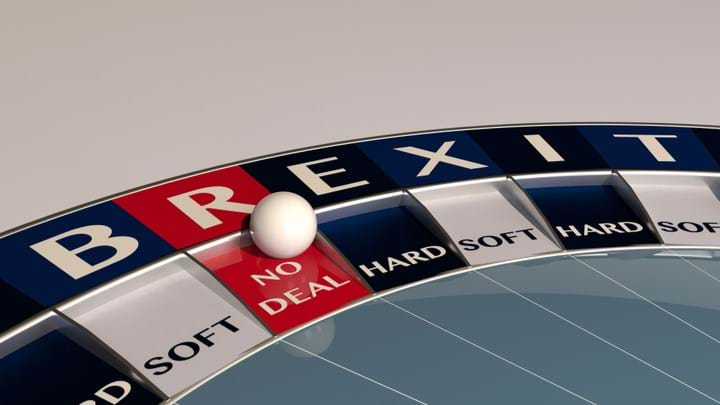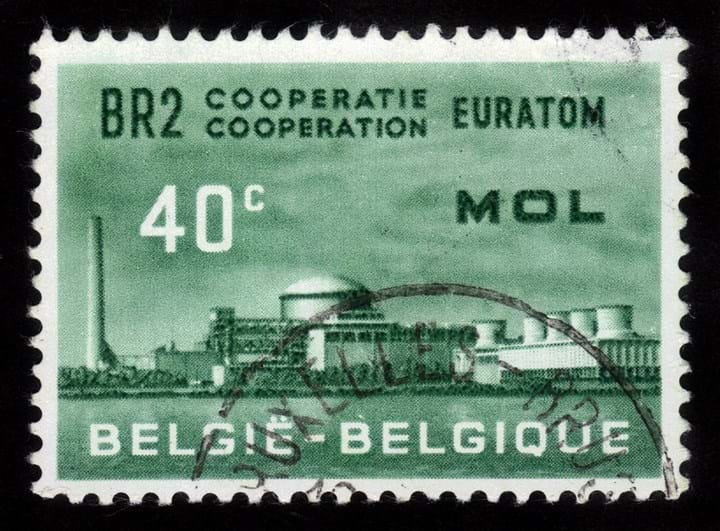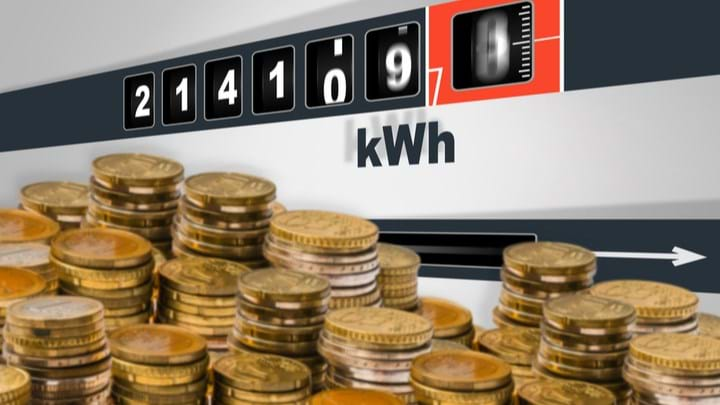Deal or No Deal – Brexit and UK Energy Policy

THE UK is due to leave the European Union (EU) on 29th March 2019. At this late stage there is still no certainty concerning the handling of the myriad interconnections and partnerships formed with the EU over the past decades. This article examines the most up-to-date evidence available on the likely impact on the UK’s energy sector of leaving with and without an agreement brokered between the UK and the EU.
Disentangling our shared policies and infrastructure has the potential to impact many aspects of the economy and the lives of people in the UK. The EU energy system is highly integrated, and the UK has fully participated in and often led the way in this integration. This suggests that there is little disagreement in what the economically-sensible end-point would be, given the chance and desire to negotiate one.
While a transition period would enable negotiation of a future energy relationship, in a no deal situation the UK would immediately leave the EU’s energy market, the Emissions Trading Scheme, and nuclear regulator Euratom. In the next two sections we’ll examine what a negotiated energy relationship would look like and review the knock-on effects of severing ties to these institutions without a plan.
Deal
The proposed Withdrawal Agreement does not set out arrangements for the UK’s future relationship with the EU regarding energy markets or trading. It does guarantee that current trading arrangements (including those involving energy) with the EU will not cease until at least the end of the transition period at the end of December 2020.
Although details of the UK’s future energy relationship with the EU would still need to be negotiated, some information can be gathered from the Draft Political Declaration which provides a framework for a proposed future UK-EU relationship. The UK and EU agree to “cooperate to support the delivery of cost efficient, clean and secure supplies of electricity and gas”. A “framework to facilitate technical cooperation between electricity and gas networks operators and organisations” is needed, as is a mechanism for “efficient trade over [electricity and gas] interconnections”.
Within the EU, electricity and gas are traded tariff-free between EU member states. Currently, gas is traded with Continental Europe via two sub-sea interconnectors (there are also two with Norway), and electricity via two interconnectors. One gas interconnector and two electricity interconnectors also exist between Britain and Ireland. These electricity interconnectors enable domestic electricity shortfalls in Britain to be compensated at minimal cost. This helps reduce prices in the UK where wholesale electricity prices are 50% higher than Continental prices. If a Withdrawal Agreement results in a high level of integration, there may be very little disruption to energy supply, trading, and costs for consumers.
It is in the interest of both the EU and UK to remain closely aligned around energy policy, trade and regulations. The Internal Energy Market (IEM) refers to the collective gas and electricity markets of the EU member states. EU member states’ energy infrastructure is physically well connected, facilitating frictionless trade of gas and electricity. Interconnections provide security of energy supply and reduce generation costs; underutilised electricity generation capacity in an EU country in which electricity prices are low may easily be ramped up to displace more expensive production in another country. This mechanism is known as joint optimisation of dispatch.
Leaving the IEM is not a requirement of Brexit per se, but if the UK is prevented from trading gas and electricity with the EU it will effectively be excluded from the IEM. According to a study by Vivid Economics the cost to the UK economy of being excluded from joint optimisation is around £160m–200m/y by early 2020s.
Several regulatory bodies exist to coordinate the functioning of the IEM, including:
- The Agency for the Cooperation of Energy Regulators (ACER). This has a legal mandate to coordinate and integrate the EU energy market to improve efficiency of energy trading
- The European Networks of Transmission System Operators for electricity and gas (ENTSO-E and ENTSO-G). These are responsible for planning infrastructure across EU member states’ borders and developing EU-wide legislation such as gas and electricity network codes which facilitate integration of the IEM).
To continue trading gas and electricity with the EU after Brexit, EU law would require the UK to abide by EU network codes. Regaining full membership of ENTSO-E and ENTSO-G (but not ACER) is possible if the UK complies with the rules set by these bodies. Such agreements would take time to negotiate, and this is an area for the UK and the EU to focus on during a transition period. EU regulations do not allow non-EU member states full membership of ACER (though associate membership is possible). This means the UK would not be entitled to vote on determining the regulatory policy of ACER.
When it comes to Euratom, the UK Government has ruled out continued full membership, which requires European Court of Justice jurisdiction. Nuclear energy provided 21% of the UK’s energy supply in 2015, and the government have indicated support for continued growth of the sector. However, with or without a withdrawal agreement in place it is highly unlikely the UK will maintain membership of Euratom, which presents considerable issues for the sector.
While the UK has passed legislation to replicate the Euratom regulations for safeguarding and controlling the use of nuclear material, no solution to ensure the continued supply of these substances for energy production and medical use has been agreed. The UK has indicated it would prefer a new form of ‘associate membership’ to allow for ongoing import of nuclear materials from the EU. This relationship is yet to be negotiated, but the UK has also signed Nuclear Cooperation Agreements with Australia, Canada, Japan and the United States to reduce the risk of disruption.

No deal
Under a no deal Brexit the price of gas and electricity for consumers would likely increase because the UK would no longer be part of the IEM. The efficiency-increasing and cost-reducing measures that membership of the IEM provides would no longer be available to the UK.
The IEM has sought to streamline and optimise the trade of electricity and gas between countries and consumers, reducing the need for reserve generation capacity and resulting in lower costs. According to a report from the European Parliament, leaving the IEM jeopardises the frictionless trade of gas and electricity between the UK and the EU. If the UK can no longer rely on the EU to compensate domestic gas and electricity shortfalls, more costly domestic generation is required in the UK. Price rises may be passed onto consumers. The UK can continue to participate in the IEM after Brexit, but it would require agreements between the EU and the UK to ensure the latter’s compliance with European Network Codes and the rules of regulatory bodies (ACER, ENTSO-E and ENTSOG). It is not clear whether the UK would consider this an encroachment on its sovereignty.
The electricity market is likely to be affected more by a no deal Brexit than the gas market. This is because UK and Continental gas markets are physically well connected, there is minimal congestion, little difference in wholesale gas prices across the market and because the UK has the largest liquefied natural gas import infrastructure in Europe. With the UK importing most of its pipeline gas from Norway, the UK has relatively little dependence on the EU for either its exports or imports. Whether there is a hard, soft or no deal Brexit, the overall impact on gas trade and prices will be minimal. Unlike gas, electricity is expensive and difficult to store, and the decarbonisation of the energy sector will mean an increased use of variable renewable energy sources. This means that for electricity, market liquidity and system efficiency and stability are enhanced by the ability to trade electricity freely between countries.

The Single Electricity Market (SEM) that exists between Northern Ireland and the Republic of Ireland is one of the most integrated electricity networks in the EU. Both countries rely heavily on their ability to trade electricity with the other to meet demand, reduce electricity costs and optimise system efficiency. Up until now electricity trading has been free and conducted within a single regulatory framework which allows for seamless trade between the two countries. The Irish and Northern Irish regulators state that the SEM will continue even in a no deal scenario, but with reduced efficiency as it will be isolated from the pan-EU market.
Outside the IEM, the UK would be importing gas and electricity under World Trade Organisation terms and conditions; the UK would act merely as a customer to the EU market, buying and selling gas and electricity according to demand. This is vastly different to trade within the IEM, in which (in addition to tariff-free trade) market optimisation measures facilitate complex market optimisation processes, such as enhanced frequency response which enable quick responses to grid frequency fluctuations.
The effect with perhaps the largest impact on electricity prices for consumers is “sub-optimal dispatch” arising from the UK’s inability to participate in joint optimisation. Other issues include: lower market liquidity, less competitive pressure, and imperfect investment signals. Each of these effects tend to result in higher electricity prices.
Tariffs may be applied to raw materials needed to support the energy sector, such as for the nuclear industry or for operation and maintenance of power generation, transmission and distribution infrastructure. These costs could be passed on to consumers from utility companies. The UK Government recently introduced a price cap on the unit cost of gas and electricity which could prevent excessive price hikes, at least in the short-term. The cap is not fixed – it is subject to review and adjustments each year – so it may not see prices remain low in the long-term. Nonetheless the cap could mean that consumer energy price volatility in response to Brexit is less severe than without it.
Conclusion
The agreement currently on the table offers essentially ‘business-as-usual’, with time to come to an agreement on the less-certain future of nuclear regulation. In the event of a no deal Brexit, however, sudden exclusion from the Internal Energy Market risks driving up costs and creating a need to increase domestic generating capacity – a significant inefficiency.
Without a deal, will the UK be plunged in to darkness? Highly unlikely. We may be charged a higher premium for our shared energy consumption, but we have infrastructure, we have a relationship with the EU and closely-aligned interests.
The government intent, and across most political spectrums in the UK, is we are in a global race. The greenest, most energy efficient economies will prosper, and though each party’s approach to the energy mix is different, the overall goals are the same: reduce our energy use and cut down on waste, reduce energy bills for hard-pressed consumers, make our energy supplies more secure and less reliant on overseas imports, and drive down greenhouse gas emissions cost-effectively.
Although there are many sectors with serious concerns to be addressed, energy is a basic societal need. Price rises can have large effects on all parts of the economy as well as for low-income households, and risks to the stability of the sector must be taken seriously by those deciding the future of the UK-EU relationship.
Sarah Clark and James Sweeney are members of the IChemE Future Energy Leaders, the early career wing of the IChemE Energy Centre. The Energy Centre is a community of chemical and process engineers working in the energy sector, giving IChemE members a unified voice on policy matters and providing a platform to share knowledge and discuss issues. Find out more on our webpage or by emailing energycentre@icheme.org
Further reading
- I-SEM will continue in no-deal Brexit;
- Brexit: The Impact on Energy and Climate Change;
- University of Cambridge – The Economic Consequences of Brexit: Energy;
- University of Cambridge Energy Policy Group;
- European Parliament – The Impact of Brexit on the EU Energy System;
- European Network of Transmission System Operators for Gas;
- European Network of Transmission System Operators for Electricity;
- Parliament Policy - Leaving the EU: negotiation priorities for energy and climate change policy;
- Chatham House – Staying Connected Key Element for the UK-EU27 Energy Coorporation After Brexit;
- Euroatom – Institute for Government;
- UK National Grid;
- UK Ofgem;
- Power Technology – Euratom-Brexit;
- UK Smart Grid;
- Policy Factsheet – Smart Grid;
- UK National Energy Efficiency Action Plan;
- UK 2017 National Energy Efficiency Action Plan and Annual Report;
- Future Energy Efficiency Policy;
- Political Declaration setting out the Framework for the Future Relationship between the European Union and the United Kingdom;
- Implications for Business and Trade of a No Deal Exit on 29 March 2019 (26 February 2019);
- Vivid Economics; The Impact of Brexit on the UK Energy Sector;
Recent Editions
Catch up on the latest news, views and jobs from The Chemical Engineer. Below are the four latest issues. View a wider selection of the archive from within the Magazine section of this site.




